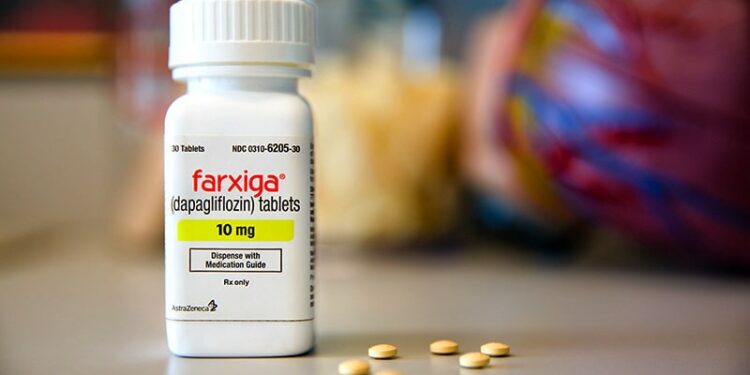[ad_1]
TOPLINE:
In older patients with type 2 diabetes (T2D), the use of sodium-glucose cotransporter 2 (SGLT2) inhibitors is associated with increased cardiovascular benefits but reduced glycemic control, whereas glucagon-like peptide 1 (GLP-1) receptor agonists show the opposite, with better glycemic control but less cardiovascular protection.
METHODOLOGY:
- Current clinical guidelines don’t recommend different diabetes treatment approaches on the basis of sex or age groups, highlighting the uncertainty caused by the underrepresentation of women and older individuals in trials.
- Researchers conducted a network meta-analysis to examine whether the efficacy of SGLT2 inhibitors, GLP-1 receptor agonists, and dipeptidyl peptidase 4 (DPP-4) inhibitors in controlling blood sugar levels or offering cardiovascular protection varied according to age and sex among adult patients with T2D.
- They included 601 eligible trials, of which 103 provided individual participant data; data on glycemic control were available for all 103 studies while six reported cardiovascular benefits.
- Individual participant and aggregate data were used to assess interactions between age and treatment as well as between sex and treatment.
- The primary outcome measures were A1c levels and major adverse cardiovascular events (MACEs).
TAKEAWAY:
- The use of SGLT2 inhibitors was associated with reduced lowering of A1c levels with increasing age for monotherapy (absolute reduction [AR], 0.24%; 95% credible interval [CrI], 0.10%-0.38% for every 30-year increase in age).
- In contrast, the use of GLP-1 receptor agonists was linked to greater lowering of A1c levels with increasing age for monotherapy (AR, −0.18%; 95% CrI, −0.31% to −0.05% per 30-year increment in age).
- The use of DPP-4 inhibitors led to slightly better lowering of A1c levels among older people for dual therapy (AR, −0.09%; 95% CrI, −0.15% to −0.03% per 30-year increment in age) but not for monotherapy or triple therapy.
- The reduction in MACEs in older patients was greater with SGLT2 inhibitors (hazard ratio [HR], 0.76; 95% Crl, 0.62-0.93 per 30-year increment in age) and lower with GLP-1 receptor agonists (HR, 1.47; 95% Crl, 1.07-2.02 per 30-year increment in age); no consistent evidence was observed for sex and treatment interactions with SGLT2 inhibitors and GLP-1 receptor agonists.
IN PRACTICE:
“The current findings highlight the need to consider the cardioprotective effects of therapies when treating older people in addition to safety, tolerability, and the priorities of patients,” the authors wrote.
SOURCE:
This study was led by Peter Hanlon, PhD, School of Health and Wellbeing, University of Glasgow, Glasgow, Scotland, and published online in JAMA.
LIMITATIONS:
Individual participant data were available for only 17% of the trials, which may have attenuated the statistical power of this study. Very few studies reported on cardiovascular outcomes. The study focused mainly on glycemic and cardiovascular efficacy, overlooking other significant clinical outcomes, such as kidney events. Although the association between these medications and known risks was assessed for variations by age and sex, the analysis was limited by the small number of events in the trial data.
DISCLOSURES:
This study received funding through a grant from the Medical Research Council. Some authors reported receiving research grants, personal fees, nonfinancial support and other ties with certain institutions and pharmaceutical companies.
This article was created using several editorial tools, including AI, as part of the process. Human editors reviewed this content before publication.
[ad_2]
Source link : https://www.medscape.com/viewarticle/age-affects-efficacy-popular-diabetes-drugs-2025a10003vz?src=rss
Author :
Publish date : 2025-02-14 10:33:33
Copyright for syndicated content belongs to the linked Source.














